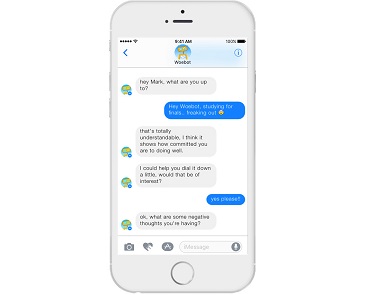Artificial Intelligent devices are now becoming common place in many of our homes. With the increased popularity of ‘Alexa’ or ‘Google Home’ it is now normal to interact with these devices daily, asking various question and expecting intelligent and accurate answers.
The same evolution is happening to both mobile apps and customer focused websites. There is now an even stronger focus on providing easy access to information in a natural and intuitive way instead of the traditional approach of hunting through various pages on a website.
Over recent years we have seen website design changing to simplify content, reduce the number of pages and complexity, this is where a chatbot can help.
Use cases
When browsing a website typically you’ll have two approaches, either you’re looking for information quickly, such as a company phone number, email, address, opening hours or simple information such as the cost or availability of a product. Alternatively, you may be happy to read an in-depth review, a long technical article or spend time researching various sites for information.
A chatbot works best for the first example, when simple short answers are needed a chatbot could be your perfect solution.
What is a chatbot?
At the most simplistic level a chatbot is a simple question and answer solution, where the chatbot will respond with the most appropriate answer based on the question you’ve asked, for example.
The question could have been asked in a varity of ways, all resulting in the same answer.
“How can I contact you?" “Where are you located?” “Are you on twitter?” “What is your phone number?” “Are you on social media?” “What is your address?” “What is your email?”
The power of a chatbot is in the intelligent interpretation of the question being asked to ensure it can deliver the most appropriate answer.
A chatbot requires investment in training and population of information, you need to think carefully about how your visitors will interact with the chatbot, the language they will use and the information they are searching for.
The more you train your chatbot the better it can respond to your customer’s needs.
More advanced chatbots can link to backend systems such as a stock control system or a product catalogue to provide a simple way of returning product information. They can also connect to third party messaging solutions such as email, Slack or CRM systems.
You can also develop chatbots which can ask for clarification, this works well in reducing incorrect responses, for example if it’s asked a question such as, “Tell me about your product”, it could response with “What product would you like to know about? Product A, Product B or Product C?”. When a closed question such as this is asked, the answers can be simple buttons allowing the user to easily tap/click on the right response.
Why use a chatbot?
Chatbots can be fun and engaging. Instead of a list of facts you could engage with your customers via a chatbot which uses language more appropriate for your audience, such as “Hey there, how can I help?”. You can also create more advanced Chatbots which guide the visitor to the right answer with simple selection options.
The future
We are already seeing great advances in chatbot technology with healthcare organisation investing in chatbot mobile apps to assist with booking an appointment with a doctor, to help monitor a health condition or to check if you’ve taken your medication. (https://www.wired.co.uk/article/babylon-nhs-chatbot-app)
Customer focused organisations are also benefiting from better customer engagement with chatbots helping at the checkout process or to help you find the perfect product. (https://www.cosmeticsbusiness.com/news/article_page/Sephora_becomes_first_beauty_retailer_to_join_chatbot_app_Kik/117206)
Companies are benefiting from chatbots which help automate processes such as booking meetings. (https://x.ai/)
Artificial Intelligence, Machine Learning and Chatbot technology are big topics for 2018, and although you’ll see a big push from manufactures promoting Alexa, Google Home, Bixby, Siri or Cortana in a lot of situations it’s not always appropriate to talk to your device, and with more consumers expecting or wanting a similar interactive experience from their mobile app or website a smart chatbot could greatly help your company or brand.
Want to read more?
Chatbots Magazine: https://chatbotsmagazine.com/ Chatbots in Healthcare: https://chatbotsmagazine.com/how-chatbots-will-shape-the-future-of-healthcare-fa8e30cebb1c
Or get in touch if you want to learn more about chatbots and other new technologies.


